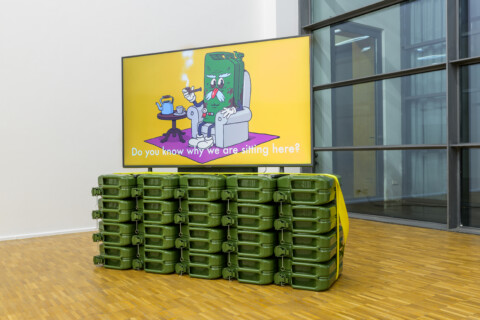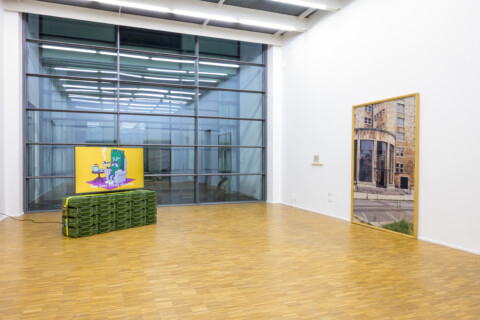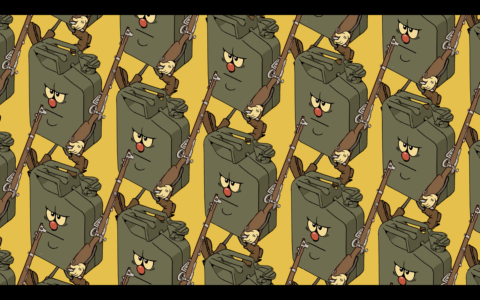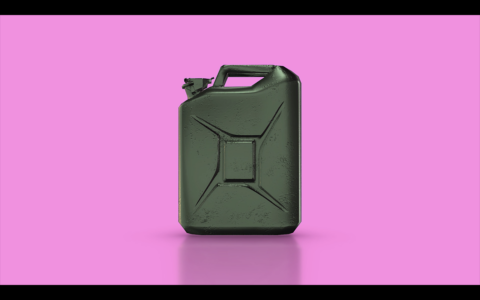The video installation shows a contemporary witness of the Second World War in the form of a petrol can, allowing it to tell its story. The Wehrmacht’s standard fuel container came to be known as the “jerrycan”. It was mass-produced from 1936 onwards by the company Max Brose, which expanded through the use of forced labourers. The memory of this company’s history leads directly to the entanglement of the field of art with the Nazi past, which continues up to the present day. Today the Brose heiress, Julia Stoschek, is known as one of the most important collectors on the international art market.
The presentation of Kahane’s work was opened with a public discussion. Moderated by the art critic and historian Julia Voss, Leon Kahane and the artist Hito Steyerl discuss the involvement of the field of art with the violent events in Germany’s past, the associations between art, politics and business, questions related to coming to terms with the past, and the impact of art.







